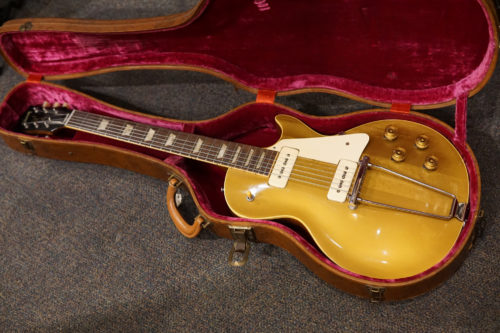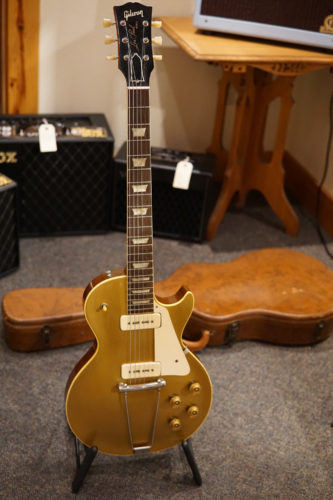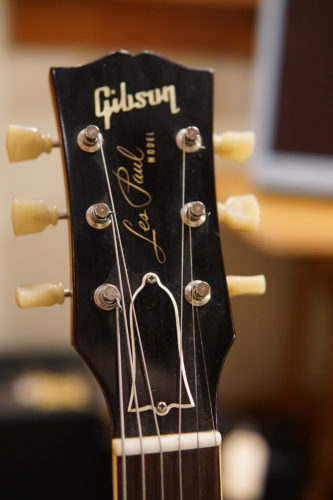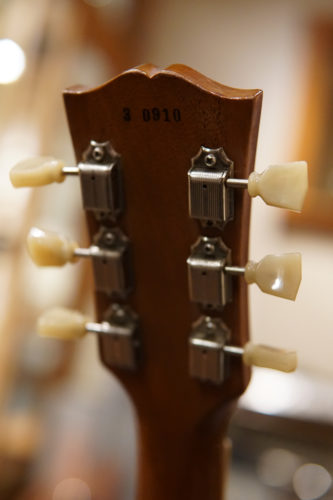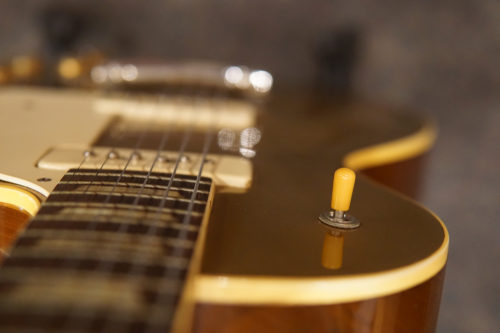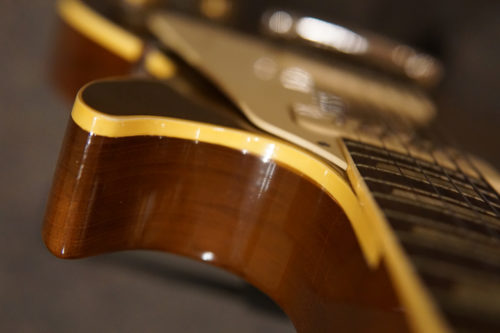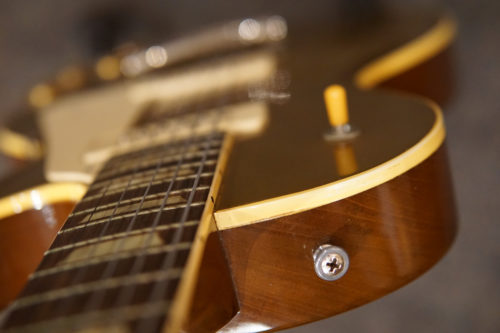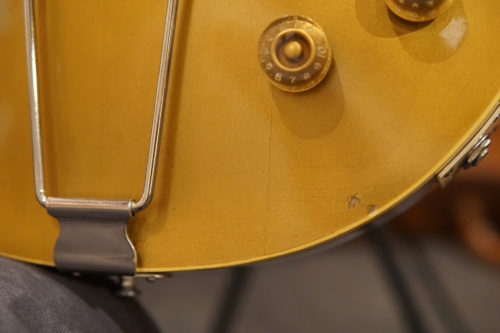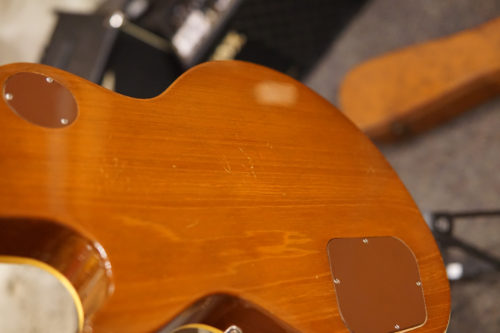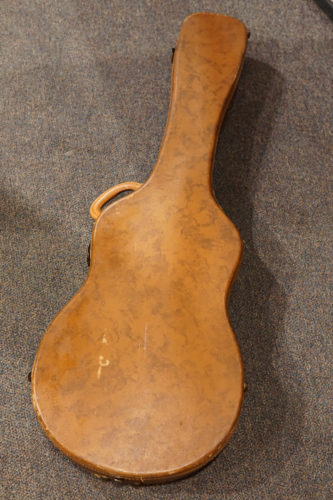Not too long ago we discovered a ’52 Les Paul lurking in a shop a little more than a mile from our office. Not too much later we discovered a ’53 Les Paul somewhat further away – a little more than two miles. Since we went to personally inspect out the ’52, the precedent set and we simply had to get out again for the ’53. So began the long journey (via bicycle) to Dusty Strings to lay hands on one of the mintier 63-year-old guitars you might hope to encounter, and our latest Catch of the Day…
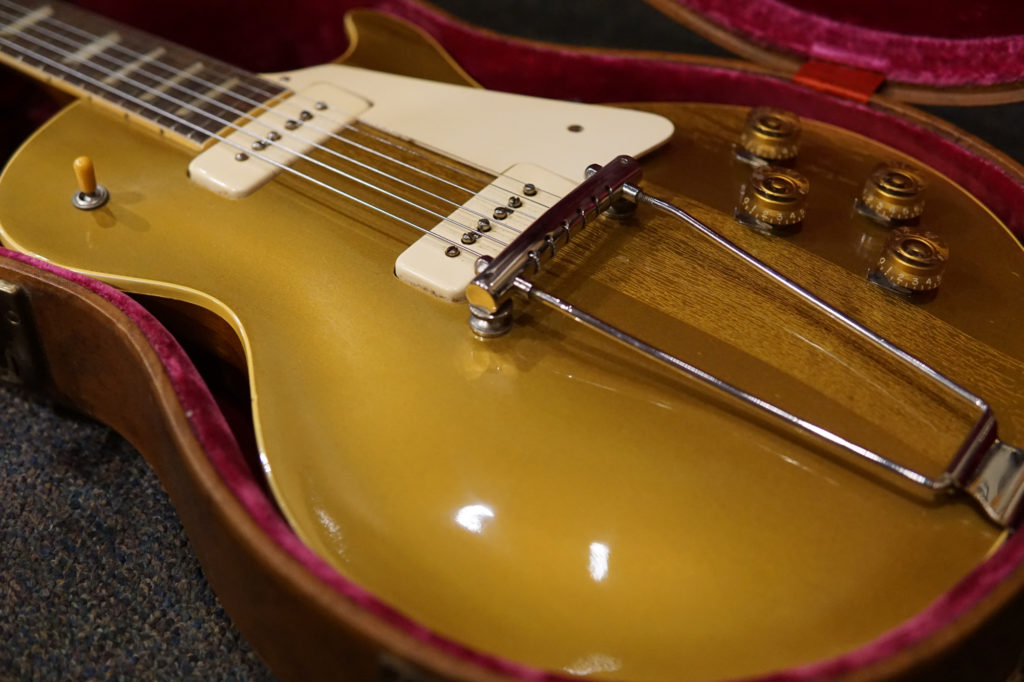
You might recall the ’52 was – how to put this delicately? – loved much and often… oh, let’s face it, it was pretty well beat up: dinged and discolored, with a replacement bridge and headstock as well as rewound pickups. This ’53, however, is just a hair or two shy of MIB (“Mint In Box”) – and, in fact, speaking of the “box,” the original case might be in even better shape than the guitar. According to the Dusty Strings evaluation, with the exception of the tuner buttons and a (very well done) refret, this guitar is entirely original. There are very few dings or scratches, and none major. Finish checking is limited to what is probably one piece of a three-piece top – the other two pieces are absurdly pristine [see the picture above]. There’s some slight discoloration to the P-90 covers, which may have shrunk a bit (the pickups rest at their original height, but the pole pieces have been raised – one or two close to their limit). Even with evidence of the previous refret, the instrument could probably use some fretwork, and there’s an evident-but-slight rise at the end of the fingerboard that causes a bit of buzz in the bass strings past the 12th fret and could warrant a slightly more significant repair (a bit of planing would do the trick).
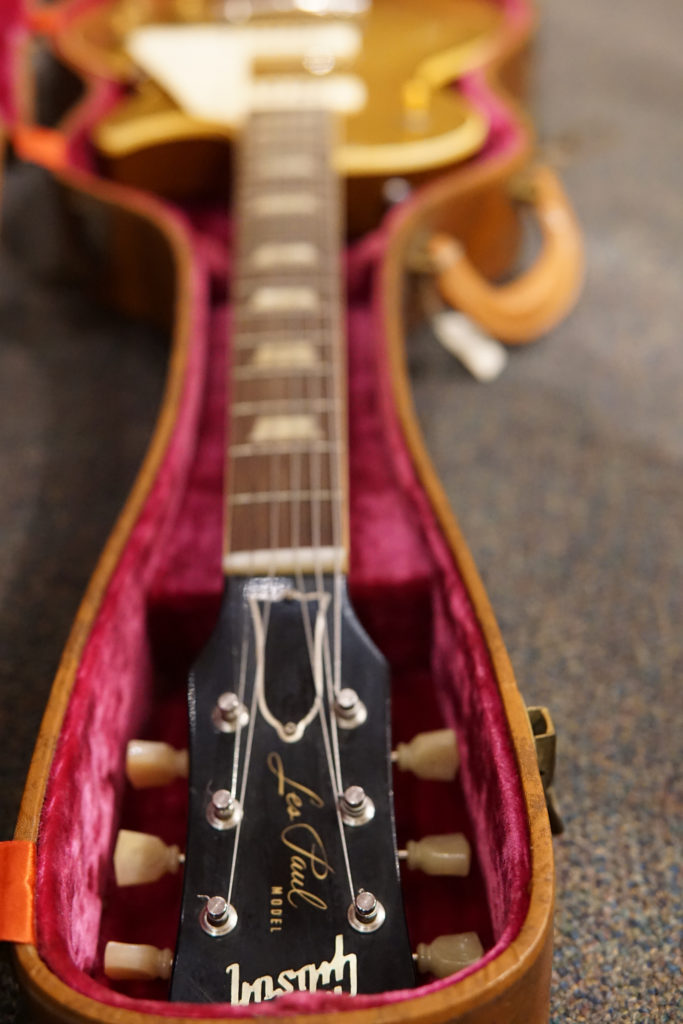
And, of course, being in pretty much mint condition, it has all the flaws inherent in the original, vis-à-vis playability in particular. I had only played the aforementioned ’52 before this one, and with its replacement bridge its playability was much improved, if not necessarily impressive. Laying hands on this ’53, however, the playability of that ’52 is suddenly impressive indeed. While the neck is comfortable (bigger than the ’52 without being “big”) and the fretwork is fine, that wrap-under bridge is not fun. In conjunction with the neck angle, for a guy who is, for better or worse, addicted to resting his palm on the saddles… I’m not sure there’s any getting used to it for me – a more adept or flexible player would differ, perhaps.
Speaking of that neck angle, however: it’s generally accepted that the neck pickup will be noticeably louder than the bridge pickup on these guitars, and while there is a distinct difference on this guitar (and, apparently, the neck pickup is “hotter” than typical – 7.9K, versus 7.6K for the bridge), the balance is actually somewhat better than it was on the ’52, and the middle/both position was particularly pleasing. The neck pickup on its own was kinda spectacular, too. In general, while I was struggling to play it, the sounds I managed to pull from it were pretty damn sweet.
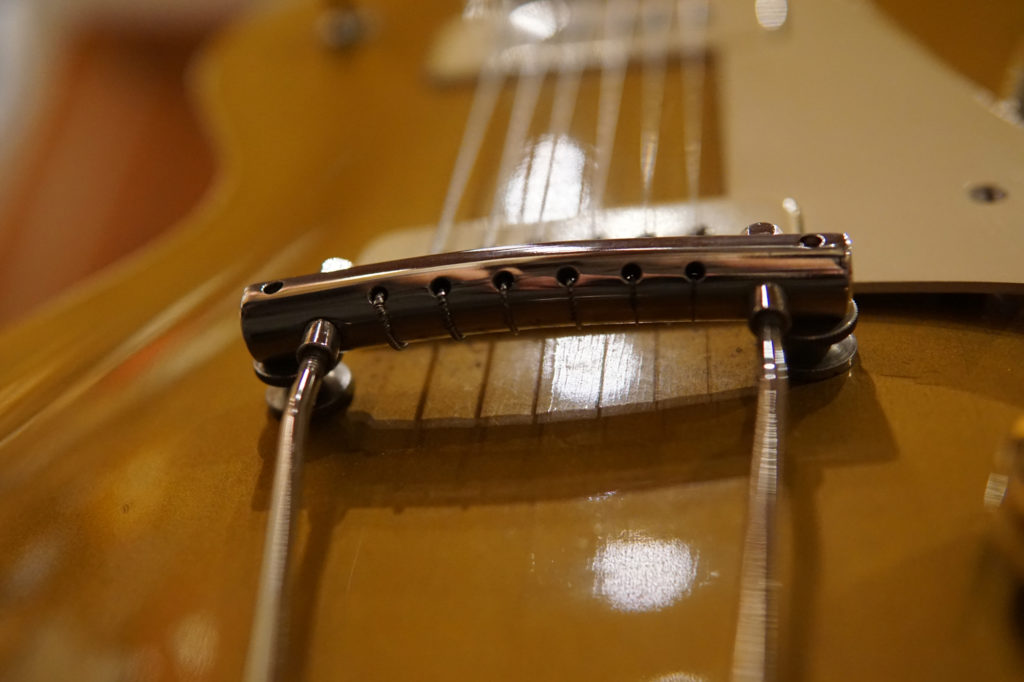
Frankly, a guitar like this is a conundrum – it’s not quite “museum quality” but anything you might do to make it more of a player’s guitar will affect its value. Meanwhile, it’s a shame that a guitar that has such an inherently beautiful tone isn’t being played, but it’s such a fine example of the original, how could you blame someone for leaving it alone and appreciating it for what it is? Fortunately, that’s a problem for someone with deeper pockets than mine. Dusty Strings has this instrument on consignment for $18,500, with not only that sweet case but its keys and the original cable. Check out the listing on their site for more info and photos; let ‘em know the Fretboard Journal sent you…
